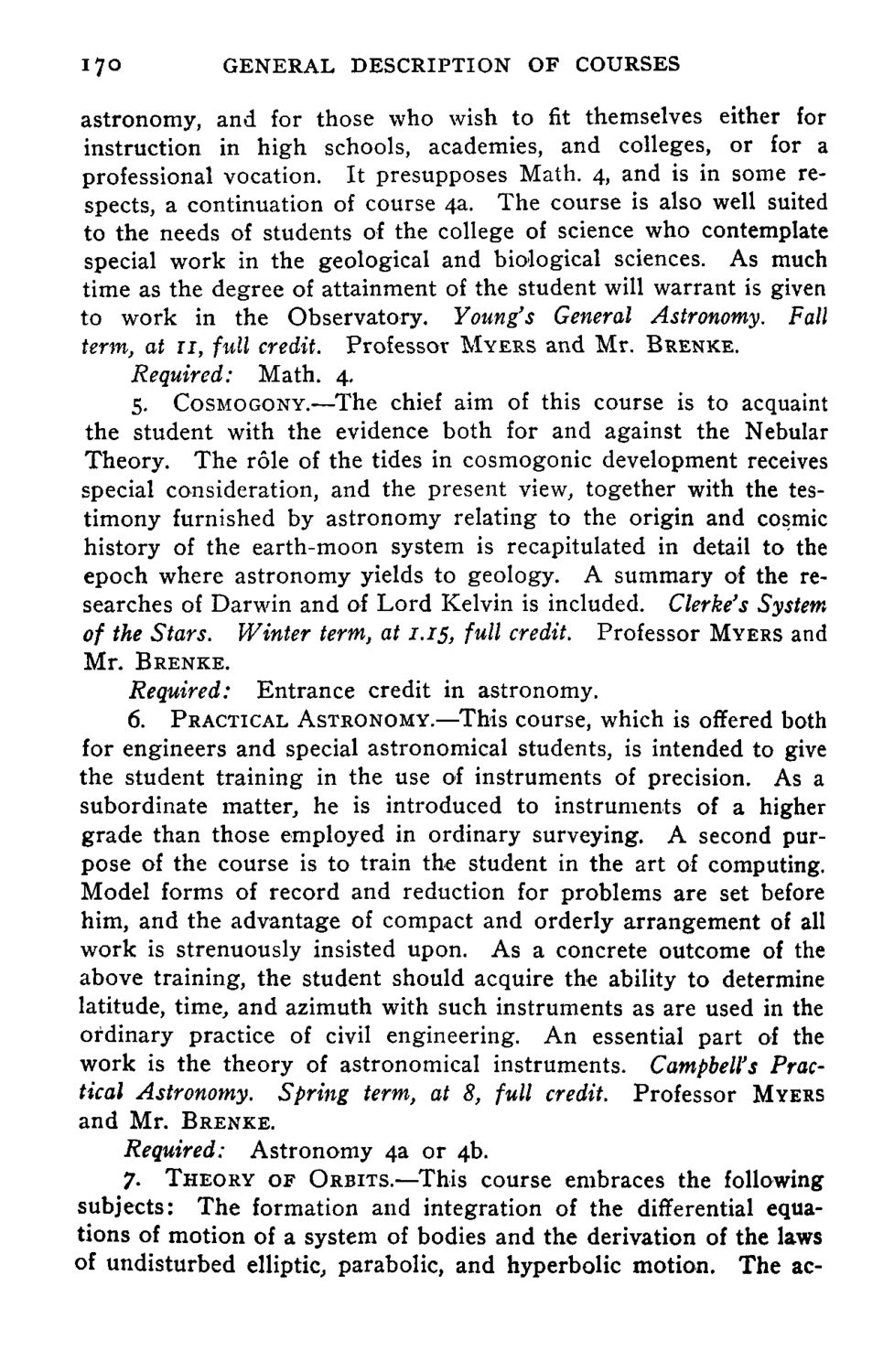Caption: Course Catalog - 1897-1898
This is a reduced-resolution page image for fast online browsing.

EXTRACTED TEXT FROM PAGE:
17° GENERAL DESCRIPTION OF COURSES astronomy, and for those who wish to fit themselves either for instruction in high schools, academies, and colleges, or for a professional vocation. It presupposes Math. 4, and is in some respects, a continuation of course 4a. The course is also well suited to the needs of students of the college of science who contemplate special work in the geological and biological sciences. As much time as the degree of attainment of the student will warrant is given to work in the Observatory. Young's General Astronomy. Fall term, at 11, full credit. Professor MYERS and Mr. BRENKE. Required: Math. 4. 5. COSMOGONY.—The chief aim of this course is to acquaint the student with the evidence both for and against the Nebular Theory. The role of the tides in cosmogonic development receives special consideration, and the present view, together with the testimony furnished by astronomy relating to the origin and cosmic history of the earth-moon system is recapitulated in detail to the epoch where astronomy yields to geology. A summary of the researches of Darwin and of Lord Kelvin is included. Clerke's System of the Stars. Winter term, at 1.is, full credit. Professor MYERS and Mr. BRENKE. Required: Entrance credit in astronomy. 6. PRACTICAL ASTRONOMY.—This course, which is offered both for engineers and special astronomical students, is intended to give the student training in the use of instruments of precision. As a subordinate matter, he is introduced to instruments of a higher grade than those employed in ordinary surveying. A second purpose of the course is to train the student in the art of computing. Model forms of record and reduction for problems are set before him, and the advantage of compact and orderly arrangement of all work is strenuously insisted upon. As a concrete outcome of the above training, the student should acquire the ability to determine latitude, time, and azimuth with such instruments as are used in the ordinary practice of civil engineering. An essential part of the work is the theory of astronomical instruments. Campbell's Practical Astronomy. Spring term, at 8, full credit. Professor MYERS and Mr. BRENKE. Required: Astronomy 4a or 4b. 7. THEORY OF ORBITS.—This course embraces the following subjects: The formation and integration of the differential equations of motion of a system of bodies and the derivation of the laws of undisturbed elliptic, parabolic, and hyperbolic motion. The ac-
|